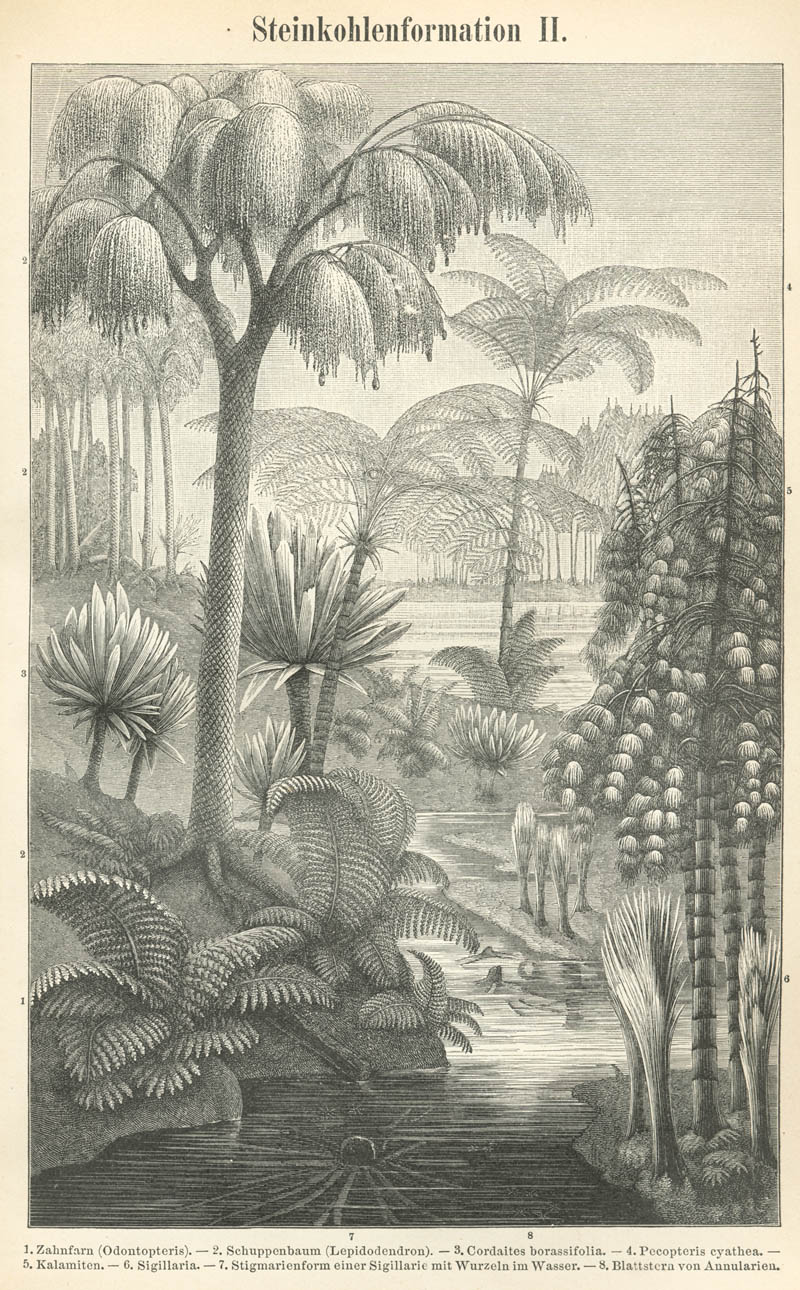Plant Fossils
Plant Fossils
The tricky thing about studying evolution is that so many things happened in the past, and in some cases so long ago, we just can't know everything. But one solid piece of evidence for many studies is the fossil record. That's right, dinosaurs aren't the only fossils out there.Plant fossils can be one of two forms: macrofossils, which are large enough to see with the naked eye and microfossils, which need a microscope to be visible. Macrofossils are usually wood, leaves, seeds, or roots that were fossilized. Microfossils are fossilized pollen.
Fossilized pollen may seem like a funny thing to go looking for, but if you think about it, it's actually a pretty bright idea. The gymnosperms that dominated the plant world before the rise of angiosperms were wind-pollinated, and so are some angiosperms. Wind pollinated plants release a lot of pollen, since the wind could carry the pollen anywhere before it finds another individual of the same species. In some areas, like lakes or riverbeds, tons and tons of pollen was laid down and fossilized, so we can get a really good idea of what plants used to grow there. Of course, pollen and plants change over time, so it is not always possible to identify the particular species, but we can get down to the genus in many cases.
Fossils are really old. Like, really really old. To know just how old they are, scientists can use a technique called radiometric dating, which uses the half-life of a known radioactive isotope to tell the age of a rock. Unfortunately, this process does not create Teenage Mutant Ninja Turtles.
Fossils can be really informative, and there is no other way we could know what plants looked like in the past. However, fossils do not form everywhere, so we don't have fossil evidence from every habitat all over the world. Water and layering of sediment is usually necessary for fossils to form, so fossils are often formed in rivers, lakes or estuaries, and they can be found in areas that were rivers, lakes or estuaries in the past.
We can recreate or at least imagine what ancient landscapes looked like because we have fossils from those times. Back in the Carboniferous period, about 300 million years ago, the world was warm and wet—quite tropical, in fact. It probably would have been a lovely time to set up a beach chair and bask in the sun, except that much of the land was swampy. Even though the descendants of early land plants that we have today are usually pretty small (mosses, ferns, and club mosses aren't exactly giants), there were actually large trees. The picture below shows what an landscape might have looked like 300 million years ago:

(Source)
Brain Snack
The oldest plant fossils are about 500 million years old and were found in Argentina.